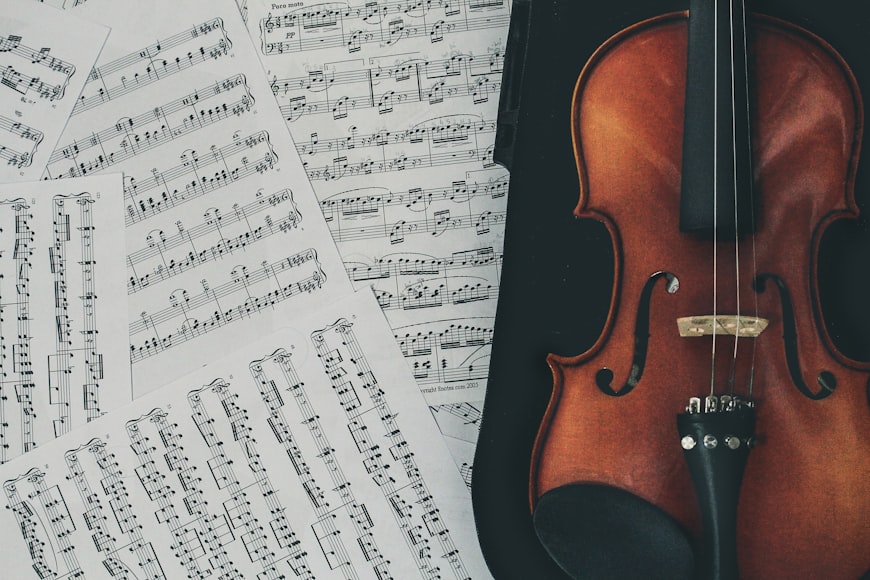Recent Posts
Search Topic
Andante, derived from the Italian word “andare” meaning “to go,” is a musical term used to describe a specific tempo or speed at which a piece of music should be played. It is often characterized as a moderate walking pace, providing a balanced and flowing musical experience.

In the world of music, andante serves as an essential element that contributes to the overall expression and interpretation of a composition. Composers utilize this tempo to convey various emotions and moods, allowing listeners to connect with the music on a deeper level.
When performed at an andante pace, musicians have the opportunity to showcase their technical skills while maintaining control and precision. This tempo allows for subtle nuances in dynamics and phrasing, enabling performers to bring out the intricacies of the composition.
Furthermore, understanding andante is crucial for both musicians and listeners alike. It provides a framework for appreciating different genres of music across various time periods. By recognizing this tempo marking in musical scores or performances, individuals can better comprehend the intended mood and style of a piece.
The term “andante” holds significant historical importance in the realm of music. Derived from the Italian word for “walking,” andante is a tempo indication that has been used for centuries to guide musicians in their performance.
The history of andante can be traced back to the Baroque era, where it was commonly associated with a moderate walking pace. Composers such as Johann Sebastian Bach and George Frideric Handel incorporated this tempo marking in their compositions, allowing performers to convey a sense of grace and elegance.
As music evolved into the Classical period, the interpretation of andante expanded further. It became synonymous with a broader range of emotions, not just limited to a walking pace. Composers like Wolfgang Amadeus Mozart and Ludwig van Beethoven utilized this tempo marking to create moments of introspection, tenderness, or even melancholy within their works.
Throughout the Romantic era, composers continued to explore the expressive possibilities of andante. They pushed their boundaries by incorporating more dramatic elements into their compositions while still maintaining a moderate tempo. Musicians like Frédéric Chopin and Franz Schubert used this tempo marking as a canvas for emotional storytelling within their pieces.
In modern times, andante remains an essential component in musical notation. It serves as both a guide for performers’ interpretation and an indication of the intended mood or character of a piece.
The history of andante showcases its versatility as a musical term that has stood the test of time. Its ability to convey various emotions while maintaining a moderate pace has made it an integral part of countless compositions across different genres throughout history.
The term “andante” in music refers to a tempo marking that indicates a moderate pace or walking speed. However, it is important to note that within the category of andante, there are different variations that can add depth and nuance to musical compositions.
One of the variations of andante is “andantino,” which suggests a slightly faster tempo than traditional andante. This variation adds a touch of liveliness while still maintaining the overall sense of calmness and smoothness associated with the original tempo marking.
On the other hand, “adagietto” is another variation of andante that leans towards a slower pace. It conveys a more relaxed and leisurely feel, allowing for greater expression and emphasis on each musical phrase.
Furthermore, composers may use terms like “allegretto” or “moderato” to further specify the desired speed within the realm of andante. These variations provide even more flexibility in interpreting the piece while maintaining its essential character.
Understanding the different tempo variations of andante allows musicians to bring out various emotions within their performances. Whether it’s through slightly faster tempos like andantino or slower ones like adagietto, these nuances contribute to the richness and versatility of musical compositions.
When a composer indicates “andante” in their score, they are instructing the performer to play the music at a moderately slow pace. This tempo falls between allegro (fast) and adagio (slow), allowing for a balanced and flowing performance.
The use of andante in music serves various purposes. It can create a sense of calmness, tranquility, or introspection, depending on the context and style of the composition. The moderate tempo allows for melodic phrases to unfold gracefully while maintaining clarity and emotional depth.
In addition to its standalone use as an indication of tempo, andante can also be combined with other musical terms to provide more specific instructions. For example, “andante con moto” suggests playing with motion or energy, adding an additional layer of interpretation to the performance.
Overall, understanding how andante is used in music enables performers to accurately convey the intended mood and character of a piece. By adhering to this tempo indication, musicians can bring out the subtleties within compositions while engaging listeners with its expressive qualities.
In conclusion, exploring the concept of andante in music opens up new dimensions in our understanding and appreciation of musical compositions. Its moderate pace creates an atmosphere that captivates audiences while allowing musicians to express themselves with finesse. So we hope in Plugintutor that the next time you encounter “andante” in your musical journey, embrace its significance as it guides you through an enchanting melodic voyage.